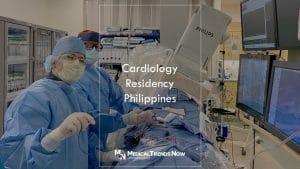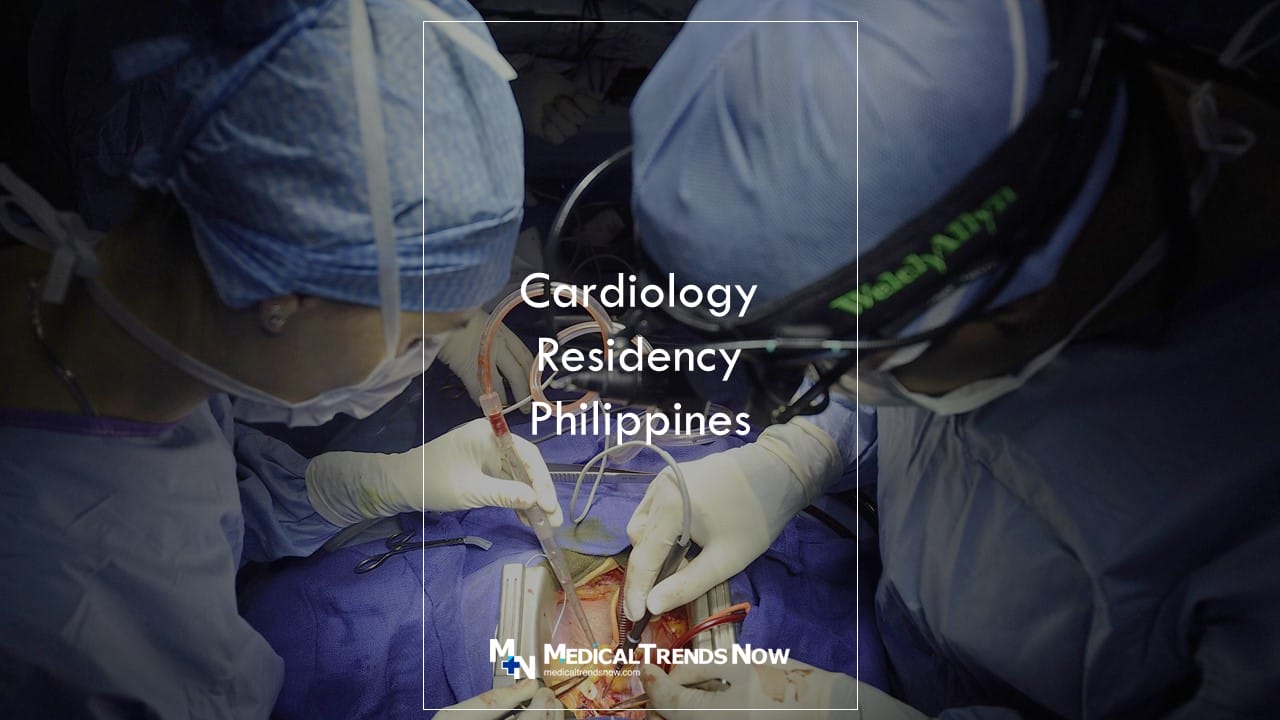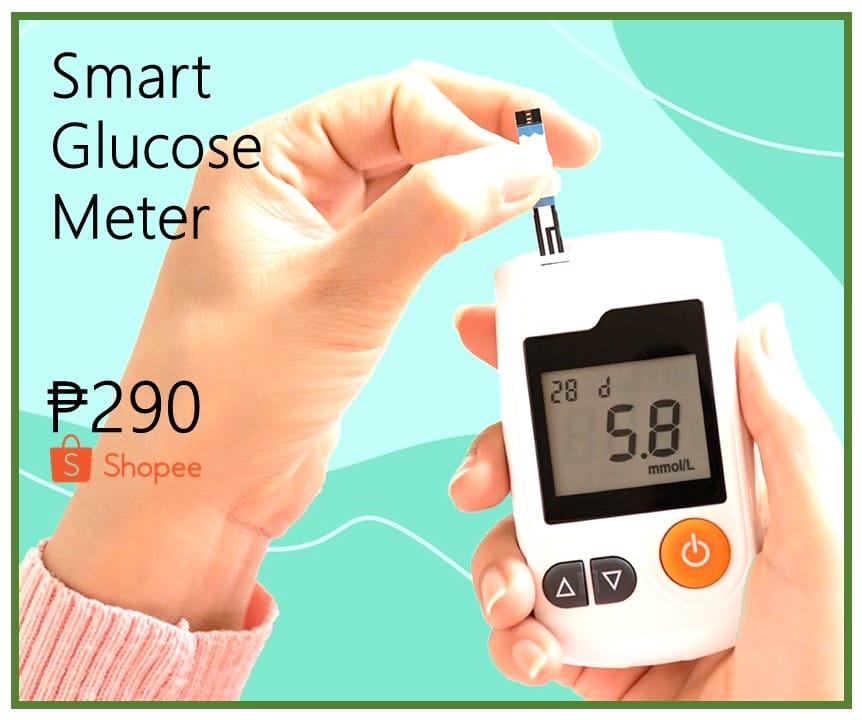Table of Contents
If you’re thinking of becoming a cardiologist, you’re probably wondering what to expect during your cardiology residency in the Philippines.
You might be curious about the requirements for a cardiology residency, or how long it will take to become a cardiologist.
We’ll share with you what we know about the average length of a cardiology residency in the Philippines and how much money you can expect to make as a cardiologist in the Philippines.
What is Cardiology?
Cardiology is the study of the heart and blood vessels. Cardiovascular diseases, such as heart attack and stroke, are the number one cause of death in the United States. Cardiology residency programs provide comprehensive training in cardiology diagnosis and treatment. Residency programs also offer opportunities to participate in cardiac research.
Fast Facts about Cardiology
- Cardiology is a subspecialty of internal medicine and it is also known as cardiologic, cardiovascular, cardiology, and cardiac.
- Cardiology is a branch of medicine that deals with the anatomy, physiology, and diagnosis and treatment of the heart and blood vessels.
- Cardiology physicians in the Philippines specializing in the diagnosis and treatment of a wide variety of heart and vascular diseases.
- Cardiology is concerned with the development of new treatments for heart disease and conditions.
Accredited Training Institutions for Cardiology Residency in the Philippines
Here are some notable training medical institutions with cardiology fellowship residency programs in the Philippines:
Angeles University Foundation Medical Center
- Website https://aufmc.com.ph/
- Facebook Page AUF Medical Center
- Mcarthur Highway, Angeles, Pampanga
- Phone No.: +6345 625 4999
Asian Hospital And Medical Center
- Website https://www.asianhospital.com/
- Facebook Page Asian Hospital
- Civic Drive, Alabang, Muntinlupa
- Phone No.: +632 8771 9000
Cardinal Santos Medical Center
- Website https://cardinalsantos.com.ph/
- Facebook Page Cardinal Santos
- Wilson Street, Greenhills West, San Juan City
- Phone No.: +632 8727 0001
Chinese General Hospital
- Website https://cghmc.com.ph/online/
- Facebook Page Chinese General Hospital
- Blumentritt Road, Sta Cruz, Manila
- Phone No.: +632 8711 4141

Chong Hua Hospital
- Website https://www.chonghua.com.ph/
- Facebook Page Chong Hua
- Don Mariano Cui St. Fuente Osmeña Center, Cebu City
- Phone No.: +6332 255 8000
De La Salle Medical Center
- Website https://www.dlshsi.edu.ph/dlsumc/
- Facebook Page DLSMC
- Gov. D. Mangubat Avenue, Dasmariñas, Cavite
- Phone No.: +6346 481 8000
Makati Medical Center
- Website https://www.makatimed.net.ph/
- Facebook Page Makati Med
- Amorsolo Street, Legazpi Village, Makati City
- Phone No.: +632 8888 8999
Manila Doctors Hospital
- Website https://www.maniladoctors.com.ph/
- Facebook Page Manila Doctors
- United Nations Avenue, Ermita, Manila
- Phone No.: +632 8558 0888
Manilamed-Manila Medical Center
- Website https://www.manilamed.com.ph/
- Facebook Page ManilaMed
- United Nations Avenue, Paco, Manila
- Phone No.: +632 8523 8131

Mary Mediatrix Medical Hospital
- Website https://mediatrixmedcenter.com.ph/
- Facebook Page Mediatrix Med Center
- JP Laurel Highway, Lipa, Batangas City
- Phone No.: +6343 773 6800
Perpetual Help Medical Center – Las Pinas Hospital
- Website https://phmc.com.ph/
- Facebook Page PHMC
- Alabang-zapote Rd., Pamplona III, Las Pinas City
- Phone No.: (+632) 8874-8515
Perpetual Succour Hospital
- Website https://www.perpetualsuccourcebu.com/
- Facebook Page Perpetual Succour
- Gorordo Avenue, Cebu City
- Phone No.: +6332 233 8620
Philippine General Hospital (PGH)
- Website https://www.pgh.gov.ph/
- Facebook Page PGH
- Taft Avenue, Manila
- Phone No.: +632 8554 8400
Philippine Heart Center
- Website https://www.phc.gov.ph/
- Facebook Page Philippine Heart Center
- East Avenue, Quezon City
- Phone No.: +632 8925 2401 Loc 3236

St. Luke’s Medical Center
- Website https://www.stlukes.com.ph/
- Facebook Page St. Luke’s
- E. Rodriguez Avenue, Quezon City
- Phone No.: +632 8723 0101
- Rizal Drive Cor. 32nd St. And 5th Avenue, Taguig
- Phone No.: +632 8789 7700
The Medical City
- Website https://www.themedicalcity.com/
- Facebook Page Medical City
- Ortigas Avenue, Pasig City
- Phone No.: +632 8988 1000
University Of Sto. Tomas Hospital
- Website http://www.usthospital.com.ph/
- Facebook Page UST Hospital
- España, Sampaloc, Manila
- Phone No.: +632 8731 3001
Vicente Sotto Memorial Medical Center
- Website https://vsmmc.doh.gov.ph/
- Facebook Page VSMMC
- B. Rodriguez Street, Cebu City
- Phone No. +632 253 9891
Program for Cardiology Residency in the Philippines: What to Look For General Cardiology Fellowship?
The Philippines is a popular destination for medical students looking to pursue cardiovascular residency. The country has a rich history in cardiology and has been ranked as one of the best places in the world to practice cardiology. There are a number of reasons for this. First, the country has a large population with a high demand for healthcare services. Second, the government has invested heavily in medical research, which has led to the development of new treatments and technologies for cardiovascular diseases.
When choosing a cardiology residency program in the Philippines, it is important to consider your individual needs and preferences. However, some factors that should be considered include: whether you want to work in an urban or rural setting; whether you want to work with international patients or remain primarily responsible for Filipino patients; and whether you want to be involved in research or focus more on patient care.

How Do I Apply for Cardiology Residency in the Philippines?
The Philippines has a rich history in cardiology, and there is currently a growing demand for qualified cardiologists. If you are interested in pursuing a residency in cardiology in the Philippines, here are some tips to help you get started:
First, research the available residency programs in the Philippines. There are many excellent options available, and it is important to find one that matches your interests and career goals.
Once you have selected a residency program, start preparing your application materials. Most programs require letters of recommendation from Filipino physicians who know you well and can speak to your medical skills. You should also submit official transcripts from all of your previous medical school courses and complete an application questionnaire.
If you are accepted into a residency program in the Philippines, be prepared for intense competition for available spots. The country is growing rapidly economically, which means there is increasing demand for talented cardiologists. If you are able to demonstrate that you have the necessary skills and qualifications, don’t hesitate to apply!
How Long is Cardiology Residency in the Philippines?
The Philippines has a few accredited cardiology residency programs.
According to the Philippine Heart Center and Philippine Heart Association, it is somewhere three-year to six-year fellowship and cardiology training program, depending on the heart specialization. But the average duration of residency is 3 years.
The first two years of medical school are spent in internal medicine training, followed by two to three years of cardiology training.
Here are sample duration of cardiology residency in the Philippines
- Pediatric Cardiology – 3 years residency
- Thoracic Cardiovascular Surgery – 5 years residency
- Cardiovascular Anesthesia – 3 years residency

What to Expect During Your Cardiology Residency in the Philippines?
If you are looking for a residency program in cardiology, the Philippines might be a great option for you. The country has a rich history in cardiology, and the medical community is well-educated and experienced. There are several renowned hospitals in the Philippines that offer residency programs in cardiology.
During your residency, you will work with some of the best Filipino doctors in the country. You will have access to state-of-the-art technology and resources, including cardiac CT scanners and echocardiography machines. You will also have opportunities to participate in clinical trials and present your research at international conferences.
If you are interested in cardiology residencies, the Philippines is definitely worth considering.
What are the Requirements for a Cardiology Residency In The Philippines?
The Philippines has been identified as a global healthcare destination of choice due to its excellent geographical location and affordable healthcare infrastructure. The country is home to more than 7,000+ medical institutions, including over 100+ hospitals with cardiology residency programs.
Requirements for a cardiology residency in the Philippines include completion of an accredited med school and residency training in cardiology. Applicants must also have completed a general surgery or family medicine residency training program and be board certified in cardiac surgery or family medicine.
The Philippines offers competitive salaries and benefits, including accommodation, travel allowance, and a monthly stipend. The country is also home to a growing population of expatriates who are seeking quality healthcare services.

Qualification of a fellowship training and cardiology residency in the Philippines:
- A certificate of residency from a program accredited by the General Pediatric Society
- At the time of application, you had already passed the PPS Diplomate written test.
- You have successfully completed residency training in internal medicine and fellowship training in adult cardiology at institutions accredited by the Philippine College of Physicians (PCP) and PCC for subspecialties fellowships in adult cardiology, PCP and PCCP for subspecialty fellowships in adult respiratory medicine, and PPS and Philippine Academy of Pediatric Pulmonologists (PAPP) for subspecialty fellowships in pediatric respiratory medicine.
- Diplomate of Philippine College of Physicians
- A research proposal that the DETR must receive and approve.

How to Choose a Cardiology Residency In The Philippines?
There are many factors to consider when choosing a cardiology residency in the Philippines. Some important considerations include the quality of cardiology training available, the opportunity for clinical research, and the community resources available.
When comparing cardiology residency programs in the Philippines, it is important to research each program carefully. Some important factors to consider include faculty credentials and experience, program size, location, and type of training offered.
Many residents choose a residency based on the opportunity for clinical research and its potential impact on their career. The Philippines has a rich history of biomedical research, making it an ideal place to pursue cardiovascular disease research. Residents should also consider whether they want to stay in one city or move around throughout the country during their residency.
Overall, choosing a cardiology residency in the Philippines is an important decision that requires careful consideration of each program’s individual features and advantages.
What are the Advantages of a Cardiology Residency In The Philippines?
The Philippines has a rich history in cardiology, with some of the world’s leading cardiovascular surgeons having trained here. This country also has a large population and is geographically diverse, which makes it an excellent training ground for cardiologists.
There are many advantages to residency training in the Philippines.
- First, the country’s population is large and diverse, making it an excellent place to learn about cardiovascular disease in a real-world setting.
- Second, the country has a rich history in cardiology, with some of the world’s leading cardiovascular surgeons having trained here. This gives residents access to top-tier training resources and allows them to develop their skills alongside some of the best clinicians in the world.
- Third, the country’s geographical diversity makes it an excellent place to practice cardiology – residents can find patients from all over Asia while still being based in one region.
- Finally, the country’s low cost of living makes it an attractive option for those looking to pursue a career in medicine.

Challenges for Cardiology Residents in the Philippines
There are several challenges for cardiology residents in the Philippines.
The first challenge is that the training required to become a cardiologist is significantly longer than in many other countries, which can delay residents’ ability to establish themselves in their own practices.
Additionally, the salaries offered to residents are generally lower than those offered in comparable positions elsewhere, which can make it difficult for them to afford a stable lifestyle and provide for their families.
Finally, the lack of specialty facilities can make it difficult for residents to gain experience and develop expertise in specific areas of cardiology.
What Happens After Your Cardiology Fellowship Program?
After completing your cardiology residency, you will likely be qualified to practice medicine.
However, before you can start practicing, you will need to pass a board certification exam.
After passing the board certification exam, you can then begin practicing medicine.
What Does an Internal Medicine Cardiology Doctor Do?
A cardiologist is a doctor who specializes in the diagnosis and treatment of heart diseases.
A typical day for a cardiologist includes performing cardiovascular tests, prescribing medications, and counseling patients on heart health.
Cardiology residency programs in the Philippines provide students with the opportunity to learn about the latest advances in heart disease treatment and research.

Cardiology Residency In The Philippines: What Do Residents Provide in the Hospital?
Cardiology residency in the Philippines provides residents with the opportunity to work in one of the country’s top hospitals. The residents provide a wide range of services, including cardiac surgery, electrophysiology, and cardiology.
The hospital offers a variety of training opportunities for its residents. The residency program provides intensive training that prepares residents for positions as cardiologists and cardiovascular surgeons.
The hospital also offers an excellent education system that prepares residents for careers in cardiology and other medical fields. Residents benefit from the close relationship between the hospital staff and faculty members who are experts in their field. This close relationship helps to provide training that is both challenging and rewarding.
Essential Roles of a Cardiology Physician (Cardiovascular Disease Fellowship Program)
Filipino cardiology physicians are responsible for treating and managing cardiovascular diseases, including heart attacks, strokes, and arrhythmias.
They also diagnose and treat heart-related problems such as angina, arrhythmia, and heart failure.
In addition to providing medical care, Pinoy cardiology physicians play a critical role in educating their patients about cardiovascular health and how to prevent these diseases.

What is the Difference Between Cardiology and Cardiothoracic?
Cardiology is the study of the heart and cardiovascular system. Cardiothoracic surgery is a specialty that focuses on repairing or replacing heart and lung tissues.
What is the Difference Between a Cardiologist and a Cardiovascular Doctor?
A cardiologist is a Pinoy doctor who specializes in the treatment of heart disease and other circulatory problems. A cardiovascular Pinoy doctor, on the other hand, is a doctor who specializes in the treatment of heart disease, blood vessels, and stroke. Both Filipino doctors have extensive training in diagnosing and treating problems with the heart and circulatory systems. However, a cardiologist’s training primarily focuses on treating issues with the heart itself while a cardiovascular doctor’s training emphasizes both treating issues with the heart and blood vessels.

How Much is the Salary of a Cardiology Fellowship Residents & Cardiology Faculty?
Cardiology residency programs in the Philippines offer competitive salaries and comprehensive benefits. The average starting salary for a cardiology resident in the Philippines is Php 20,000.
Depending on the location and type of Philippine hospital (government or owned), the salary of cardiology residents in the Philippines ranges Php 12,500 to Php 65,000. Here is the compensation breakdown:
- Private hospital salary for cardiology residents: Php 12,500 to Php 25,000
- Government hospital salary for cardiology residents: Php 50,000 to Php 65,000
Salaries will increase with experience, seniority, and location of the hospital.
Some hospitals also offer additional compensation such as housing, food allowance, and medical insurance.
How Many Types of Cardiology Subspecialty are There?
There are many types of cardiology, which can be broadly divided into three: invasive, non-invasive, and interventional.
What is Invasive Cardiology?
Invasive cardiology is the specialized area of cardiology that deals with the diagnosis and treatment of heart disease and other conditions through the use of invasive techniques such as catheterization, cardiac MRI, angiography, and coronary stenting.
In addition to its importance in diagnosing and treating heart disease, invasive cardiology is also important in managing other diseases such as cancer, stroke, and pulmonary embolism.
What is Non-Invasive Cardiology?
Non-invasive cardiology is the branch of cardiology that deals with the diagnosis and treatment of heart disease and other cardiovascular diseases non-invasively, using imaging techniques such as electrocardiography (ECG), echocardiography, cardiac MRI, and coronary angiography.
Non-invasive methods are often more accurate and less invasive than traditional methods, which can lead to improved patient care.
What is Interventional Cardiology?
The interventional field of cardiology is all about intervening in the heart and other organs to correct or prevent problems.
This can include performing surgery, using catheterization and other techniques to open blocked arteries or veins, or giving medications through a catheter.
The goal is to keep people as healthy as possible and avoid long-term complications.
Furthermore, there are different sub-specialties of cardiologists in the Philippines specializing in managing, diagnosing, and treatment of Filipino hearts.

Type of Cardiologist Sub-Specialties
Here are 10 different types of cardiologists in the Philippines.
General adult cardiologists?
Cardiology is a medical specialty concerned with the diagnosis and treatment of heart disease. A Filipino general adult cardiologist is a physician who specializes in treating heart disease in adults.
General adult cardiologists typically treat patients with coronary artery disease, heart failure, and other conditions related to the heart and blood vessels. They may also perform cardiac surgeries or help patients manage chronic diseases such as hypertension or diabetes.
Heart failure specialists
Heart failure specialists are Filipino doctors who specialize in the treatment of heart failure. Heart failure is a condition where the heart cannot pump enough blood to meet the body’s needs. The most common cause of heart failure is age, but it can also be caused by certain diseases or injuries.
Heart failure can lead to serious health problems, including stroke, kidney failure, and death. Heart Failure specialists work to diagnose and treat heart failure patients with treatments that include medication, surgery, and lifestyle changes.

Cardiac imaging specialists
Cardiology residency programs in the Philippines can provide you with a wealth of experience and knowledge in cardiac imaging. Cardiac imaging specialists are highly skilled Pinoy physicians who use diagnostic technologies, such as angiography, echocardiography, and MRI, to examine the heart and other organs.
Cardiology residency programs in the Philippines can provide you with an opportunity to learn about new diagnostic technologies and how to apply them to patient care. They can also give you experience working with patients who have cardiac issues.
Heart surgeons
Heart surgeons are Filipino physicians who specialize in cardiology, the study and treatment of heart diseases. They may also perform other surgical procedures on the heart, such as coronary artery bypass grafting or valve replacements.
Heart surgery is one of the most common procedures performed in hospitals worldwide. It is responsible for saving millions of lives each year, and is one of the most important specialties for a Pinoy doctor to have.
Heart surgeons are highly trained professionals who must have excellent knowledge and skills in many different areas, including cardiovascular physiology, cardiac surgery, cardiac imaging techniques, cardiopulmonary resuscitation (CPR), and acute care medicine.
Electrophysiologists
Electrophysiologists are Filipino physicians who specialize in the diagnosis and treatment of cardiac problems. They work in a variety of settings, including medical hospitals, clinics, and private practices. These Filipino healthcare professionals typically have a doctorate degree in cardiology or a related field.
The primary duties of an electrophysiologist are to diagnose and treat heart problems. They may perform tests such as electrocardiograms (EKGs) and cardiac catheterization procedures to determine the cause of a patient’s symptoms and determine the best course of treatment.
Electrophysiologists may also prescribe medications to help treat conditions such as heart disease or arrhythmias.

Advanced heart failure specialists (heart transplant specialists)
Heart failure is a condition in which the heart cannot pump enough blood to meet the body’s needs. Advanced heart failure is a serious and life-threatening condition that can lead to heart attack, stroke, and even death. Heart transplant Filipino doctors treat patients who have advanced heart failure by replacing their failing hearts with new ones.
Advanced heart failure specialists diagnose and treat the most serious form of heart failure, which can occur when the heart cannot pump enough blood to meet the body’s needs. This can lead to reduced blood flow to organs and tissues, swelling, and even death if not treated.
Heart transplant specialists help people with advanced heart failure by performing heart transplant surgery. This surgery allows patients to live longer with less severe symptoms and improved quality of life.
Adult congenital heart specialists
Adult congenital heart disease specialists are Pinoy physicians who specialize in the diagnosis and treatment of congenital heart defects.
A congenital heart defect is a birth defect in which the normal structure or function of a part of the heart is not present at birth. These defects can occur in any part of the heart and can be serious, leading to death in some cases.
The adult congenital heart is often the first doctor to detect these defects and provide prompt care that may save a child’s life.
Interventional cardiologists
Interventional cardiologists are Filipino physicians who work with technology to diagnose and treat cardiovascular diseases.
They use a variety of techniques, including catheterization, angioplasty, and stenting.
Interventional cardiology is a rapidly growing field, and there is a great deal of potential for innovation in the area.
Cardio-oncologists
Cardio-oncologists are Pinoy physicians who specialize in the diagnosis and treatment of heart and lung diseases, as well as cancer.
They often work in collaboration with other specialists, such as oncologists or radiologists, to provide the best possible care for their patients.
Cardio-oncologists typically receive extensive training in both cardiology and oncology, and are well-equipped to handle both complex cases and those with limited resources.
Cardiac rehabilitation specialists
Cardiac rehabilitation specialists are Filipino doctors who specialize in helping people with heart problems to recover and improve their health.
Rehabilitation typically involves a combination of medical treatment, physical activity, and psychosocial support.
Cardiac rehabilitation can help people reduce their risk of heart disease, improve their quality of life, and reduce the need for surgery or hospitalization.

The Development of Cardiology Residency Program in the Philippines
The Philippines has a rich history in cardiology. It was the first country to develop a cardiovascular program and has been leading the way in cardiac care for over two decades. The country’s medical professionals have been pioneers in heart disease research and have made significant contributions to the understanding and treatment of heart conditions.
Today, the Philippines boasts one of the world’s most experienced cardiology residency programs. The residents are highly trained and well-equipped to provide quality care to patients with heart disease. They are also able to draw on their country’s rich heritage of cardiac care to provide innovative treatments and therapies that improve patient outcomes.
Opportunities for Internal Medicine Residency: Filipino Cardiology Residents
The Philippines is a country located in Southeast Asia with a population of over 100 million people. The country has a rich culture and is home to many beautiful beaches. The medical profession in the Philippines is rapidly evolving and there are many opportunities for cardiology residents to hone their skills.
The country has an excellent healthcare system that provides access to excellent quality care. There are many hospitals, both private and government-run, throughout the Philippines that offer residency programs for cardiology residents.
The medical facilities are modern and well equipped, providing excellent patient care. Residents will have access to state-of-the-art technology and experienced staff who will provide guidance and support throughout their training program.
There are also many opportunities for cardiology residents to work in private practice or join pharmaceutical companies as research scientists. The country has a large population and there is potential for cardiologists to serve a large number of patients who enjoy good health care.
What are the Opportunities for Cardiology Doctors in the Philippines?
The Philippines is a country with a population of over 100 million people. As the number one Southeast Asian economy, the Philippines is fertile ground for cardiology doctors looking to practice their craft.
There are currently more than 1,000 cardiology residency programs in operation in the Philippines, with many more in development. Many of these programs are affiliated with local hospitals and offer excellent training opportunities for Filipino doctors who wish to specialize in cardiology.
The Philippines also has a strong tradition of community-based care. This makes it an ideal place for Pinoy doctors who want to work in rural areas or provide outreach services to underserved populations.
In addition, the country’s large population means that there is always a demand for cardiology specialists.

5 Best Practices For Your Cardiology Residency In The Philippines
There are a few things you should keep in mind when studying for and completing a cardiology residency in the Philippines. Here are five of the best practices to follow:
1. Respect the local culture.
This includes learning about the local customs and religions, as well as abiding by their social norms. You will want to avoid any potential conflicts or misunderstandings with your patients or their families.
2. Make use of local resources.
The Philippines is home to some of the world’s most talented medical professionals, so make use of their expertise and resources when studying for your residency. You can find teaching hospitals, research facilities, and other relevant resources here.
3. Stay up-to-date on advances in cardiology care.
Keep up with the latest advances in cardiology care through continuing medical education courses and journals, as well as via online resources such as Medical Trends Now. This will help you stay current with the latest treatments and techniques for treating heart disease patients in the Philippines.
4. Attend medical conferences and exhibitions.
Take advantage of regional conferences and workshops offered by your residency program or by other organizations affiliated with cardiology care in the Philippines. These events provide an opportunity to share your latest knowledge and experiences with fellow Filipino doctors and specialists, as well as to network with potential employers.
5. Lectures and symposiums.
Seek out opportunities to give presentations or lectures on cardiology topics to patients and their families. This can be a great way to familiarize yourself with local customs and religious beliefs, as well as to provide valuable information and advice on heart health care.
If you are considering a career in cardiology, the Philippines is an ideal place to start your training.
Here, you will find talented medical professionals who adhere to traditional customs and religions, as well as social norms that support good heart health care.
Additionally, the country is home to some of the world’s most advanced cardiac care facilities, making it an ideal place to learn about modern treatments for heart disease patients.
Furthermore, regional conferences and workshops offer an excellent opportunity for you to share your knowledge and experiences with fellow Pinoy doctors from around the world.
Finally, by giving presentations or lectures on cardiology topics to patients and their families, you can help them better understand heart health care. Ensuring that they receive the best possible care for their condition.
If this sounds like the right path for you – congratulations! The journey ahead will be exciting and rewarding.
Conclusion: Cardiology Residency In The Philippines
The Philippines offers a rich vein of medical programs that can be perfect for any cardiology resident. With a variety of residency options, residents will have plenty to choose from when searching for the perfect program. Cardiology residencies in the Philippines offer excellent training with world-renowned surgeons and experts in the field. The country’s warm weather and culture make it an ideal place to practice medicine.














